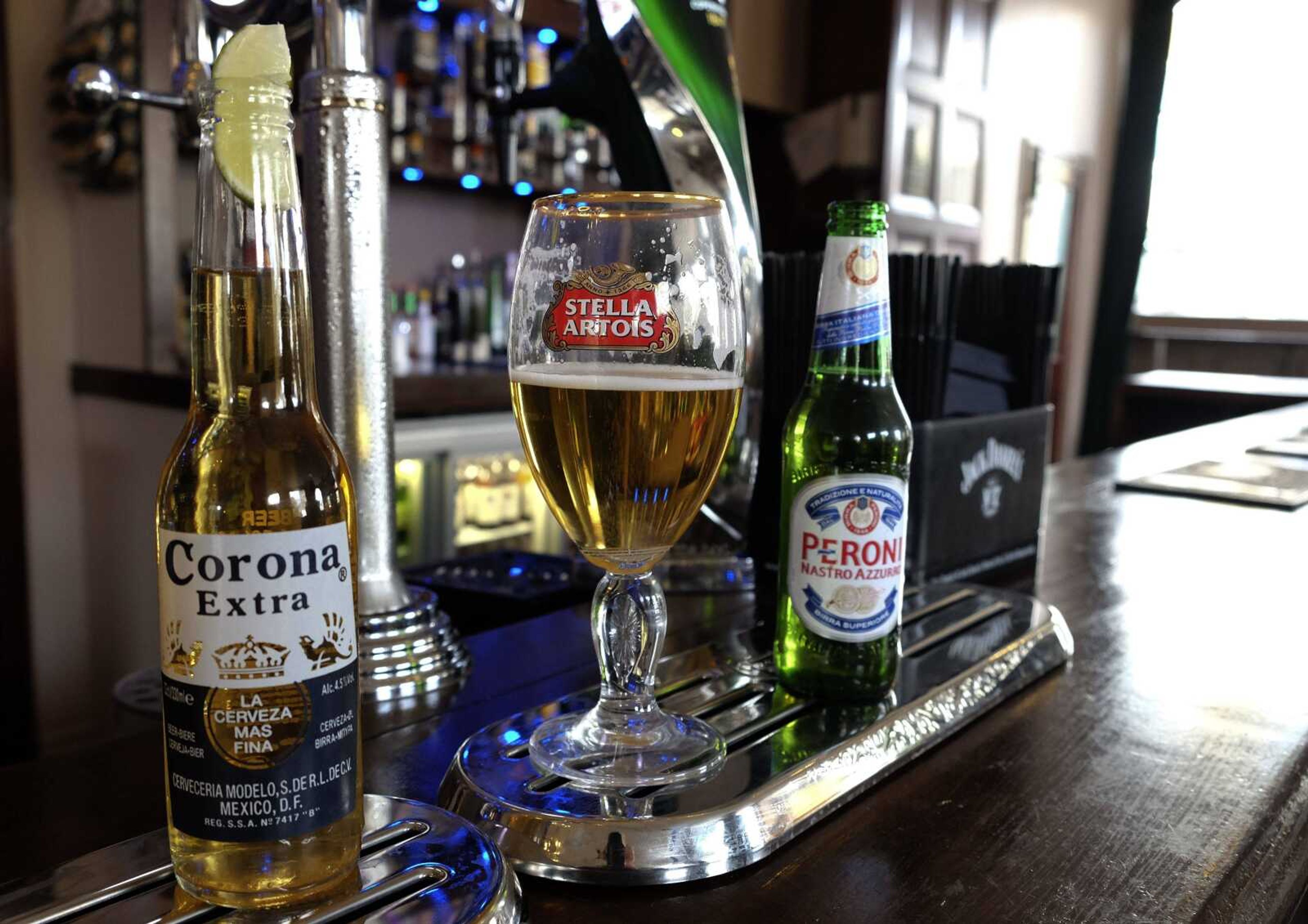Big beer merger leaves future uncertain for competitors
LONDON -- It's no fun being in the middle. Heineken, Molson Coors and Carlsberg are storied brewers that trace their roots back hundreds of years and have loyal drinkers around the world. But the merger of their two biggest competitors leaves such mid-size brewers without a clear way forward...
LONDON -- It's no fun being in the middle.
Heineken, Molson Coors and Carlsberg are storied brewers that trace their roots back hundreds of years and have loyal drinkers around the world.
But the merger of their two biggest competitors leaves such mid-size brewers without a clear way forward.
They find themselves squeezed between a Goliath that will produce almost a third of the world's beer and a growing army of craft brewers.
Some experts said the mid-size brewers should respond by pursuing takeovers of their own.
Others argue that would do little good, because the underlying problem is consumers increasingly are drinking craft beers, not mass-market brands.
"There are so many craft beers out there," said Jonny Forsyth, a global drinks analyst at Mintel.
"They can't buy them all up."
Discussions about world domination heightened Wednesday when Budweiser maker Anheuser-Busch InBev agreed to buy SABMiller for $107 billion.
That combination would account for 29 percent of the world beer market, making it three times bigger than its nearest rival Heineken, with a mere 9 percent, according to the market-data firm Euromonitor.
Beer makers looking to bulk up in response will have few options, because some of the likely targets are privately held and not interested in selling, said Jeremy Cunnington, the senior alcoholic drinks analyst for Euromonitor.
"There isn't that much else to buy or acquire," Cunnington said.
Heineken N.V. has public shareholders, but the family owns 50.5 percent of the shares, "retaining family involvement and vision." Carlsberg also is controlled by a foundation, which has 75 percent of the votes.
To ease regulatory concerns in the United States, SABMiller will sell its 58 percent stake in a venture with fellow brewer Molson Coors for $12 billion.
But AB InBev still would be the No. 1 player in North America, as well as Australasia, Latin America, the Middle East and Africa.
In Europe, it would lag behind only Carlsberg in the east and Heineken in the west, according to Euromonitor.
AB InBev was attracted to the deal because it wants to grow sales through SABMiller's brands in Africa and Asia, where drinkers are expected to buy more brand beers as their wealth increases.
In developed markets, by contrast, the big companies are seeing sales decline and trying to fight off an onslaught of craft brewers.
Consumers, bored with the previous offerings, began fleeing the big brands in the 1980s in favor of more complicated craft brews.
"Beer drinkers ... these days are far less brand loyal," said Duane Stanford, editor of Beverage Digest. "There's a lot of room to play."
Beer companies have tried to counter the trend by buying craft brewers.
They also have tried to replicate what the craft brewers have done, or at least evoke their ethos.
Carlsberg, for example, calls its founder "probably the first hipster" and said he opened his first microbrewery in 1847.
AB Inbev's deal is far from completion, facing regulatory hurdles in the United States, China and South Africa.
Craft brewers are among those watching things closely.
The Brewer's Association, the trade body for America's 4,000 small and independent breweries, urged the Department of Justice and Congress to examine the merger's "potential effects on the U.S. marketplace and American consumers" closely.
"The beer drinker wants variety. (Beer drinkers) want choice. They want quality. They want authenticity. All of those things are delivered by the American craft brewer," the association's CEO, Bob Pease, said as he described his concerns.
Ironically, the craft brewers should want the new combination to be as big as possible, argued Erik Gordon of the Ross School of Business at the University of Michigan.
That's because economies of scale discourage behemoths from doing niche and special-run beers, "leaving those spaces open to the craft brewers," he said.
"In the U.S., the test of a merger is not its size considered alone," Ross said. "It is the potential effect on competition and therefore on prices."
Connect with the Southeast Missourian Newsroom:
For corrections to this story or other insights for the editor, click here. To submit a letter to the editor, click here. To learn about the Southeast Missourian’s AI Policy, click here.









